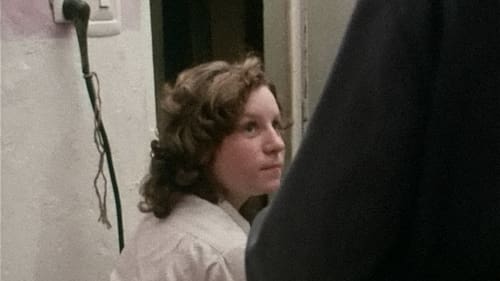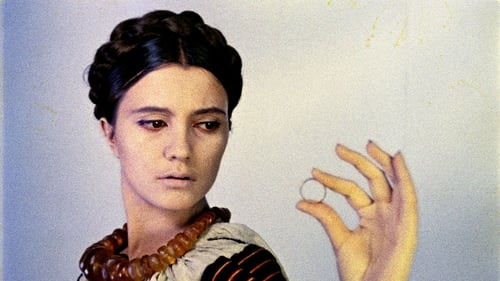Short and Suite (1959)
장르 : 애니메이션
상영시간 : 5분
연출 : Norman McLaren, Evelyn Lambart
시놉시스
A color cocktail by Norman McLaren and Evelyn Lambart, translating into moving patterns of color and light the moods of music written for a jazz ensemble by Eldon Rathburn. Inscribed and colored directly on film.

A man sets a ping-pong ball into motion and it becomes fruitful and multiplies.

젊은 연인이 아침에 깨어나는 순간으로 시작되는 이 작품은 이불 속에서 깨어나고, 우유를 마시고, 짧은 대화를 나누고, 아침을 먹는 아침의 일상들을 보여주고 있다. 잦은 클로즈업과 밀착된 카메 라는 두 연인 사이의 가까움을 보여주지만 이들의 관계가 무엇인지를 또렷하게 확인시켜주지는 않는다. 두 사람은 꼭대기 층으로 올라가 자전거를 갖고 내려온다. 남자가 자전거를 타고 아침 길을 나선다.

The first Wojciech J. Has (Saragossa manuscript) short film. Very simple and touching story about a boy who dreams about buying an accordion.

Clever and mildly entertaining short from Plympton shows us the point of view of a tree throughout its life. The film gives us various vignettes dealing mostly with sex and violence.

In this short film by Norman McLaren, dancers enact the Greek tragedy of Narcissus, the beautiful youth whose excessive self-love condemned him to a trapped existence. Skilfully merging film, dance and music, the film is a compendium of the techniques McLaren acquired over a lifetime of experimentation.

A student is visited in his university lodgings by his critical parents.

22년 전 우연히 만난 여인 ‘실비아’를 찾아 나선 여정.

In 1912, Szczebieniew, a rich and ailing old man, comes to Italy with his young wife, Zinaida. Bored with his company, she looks for amusement and casual affairs.

이 다큐멘터리는 결혼, 집 그리고 안정된 직업이 준비되지 않은 상태에서 아이를 갖게 된 어린 커플의 이야기이다. 학교 선생님과 친구들 그리고 기관의 관계자들은 ‘모범적인’ 절차를 따르지 않고 아이를 낳으려 하는 그들을 무모하다고 판단한다. 그러나 두 사람은 자신이 꿈꾸는 독립을 얻기 위해서 관료주의적 행정 절차와 사람들의 편견에 굴하지 않고 함께 살아가는 것을 배우려는 책임감을 보여 준다. "첫사랑"은 그런 두 사람이 크고 작은 시련에 맞서며 성숙하는 과정을 개입 없이 관찰자의 시선으로 담고 있다.

Animation featuring dancing black and white shadows.

Norman McLaren attempts to give the opening speech for the first Montreal International Film Festival, but his microphone won't cooperate.

Rythmetic is a 1956 Canadian short animated film directed by Norman McLaren and Evelyn Lambart where numbers are the main characters.

Parajanov's collage of all the footage that remained from his film "Kyiv Frescoes," which was halted by the authorities who demanded that all the negatives be destroyed.

영화는 한 젊은 남자의 24시간을 추적하며 그 속에서 드러나는 엄마, 여자친구 그리고 친구들과의 관계에 주목한다.

A surreal journey of a displaced spirit as he wanders in the interminable darkness through the temporal landscape of a quaint and isolated feudal-era fishing village. Guided by a series of faintly illuminated rooms, the wandering spirit comes upon ancient souls who take on physical forms as they recount their personal stories of daily existence, loss, and tragedy in the peasant community. Intrigued by his initial visit to a curiously distracted elderly woman, the spirit returns to her home in order to ask a fundamental question - "What is happiness?" - an existential query that is innocently answered with innate humility and accepted unknowingness.

An experiment in pure design by film artists Norman McLaren and Evelyn Lambart. Lines, ruled directly on film, move with precision and grace against a background of changing colors, in response to music specially composed for the films.

Animated photographs (made with Jan Lenica) with elements of animated cartoon. A display of military drill.

Colourful orphanage life.

Paper cutouts over images of mixed colorful liquids, creating hypnotizing swirls and aesthetic explosions, as well as combining original and futurological sounds. Starting with the relentless hunting of antelopes, the geometric cutouts show the constant struggle between the warring groups. We have been observing it since the primeval times, when the tools of the battles were arches and spears, through the times of the domination of swords, later replaced by firearms. The increasing automation and power of war machines, the emergence of tanks and aircraft, eventually the use of weapons of mass destruction lead to total annihilation

This three-part ballad, which often uses music to stand in for dialogue, remains the most perfect embodiment of Nemec’s vision of a film world independent of reality. Mounting a defense of timid, inhibited, clumsy, and unsuccessful individuals, the three protagonists are a complete antithesis of the industrious heroes of socialist aesthetics. Martyrs of Love cemented Nemec’s reputation as the kind of unrestrained nonconformist the Communist establishment considered the most dangerous to their ideology.







